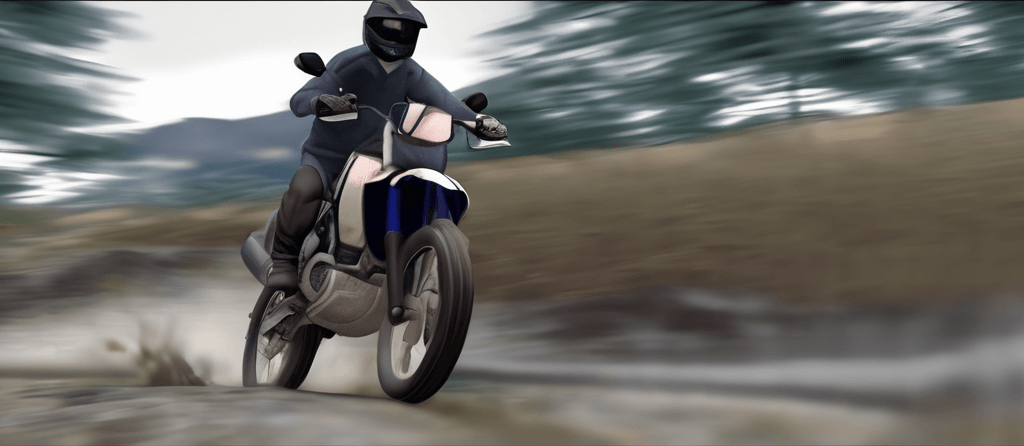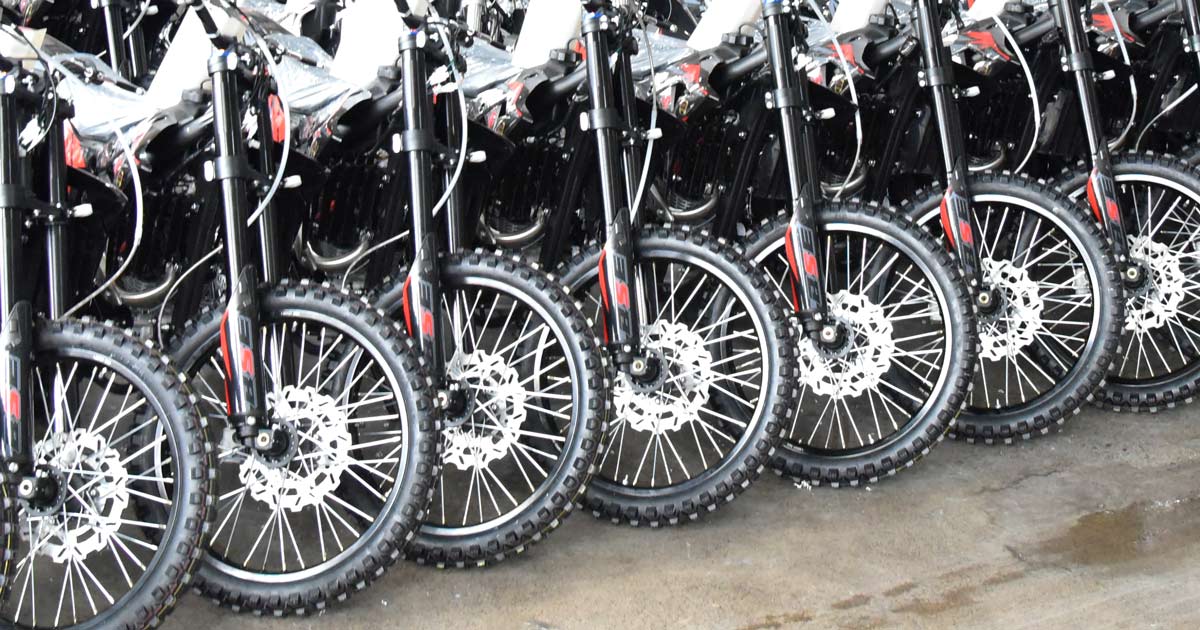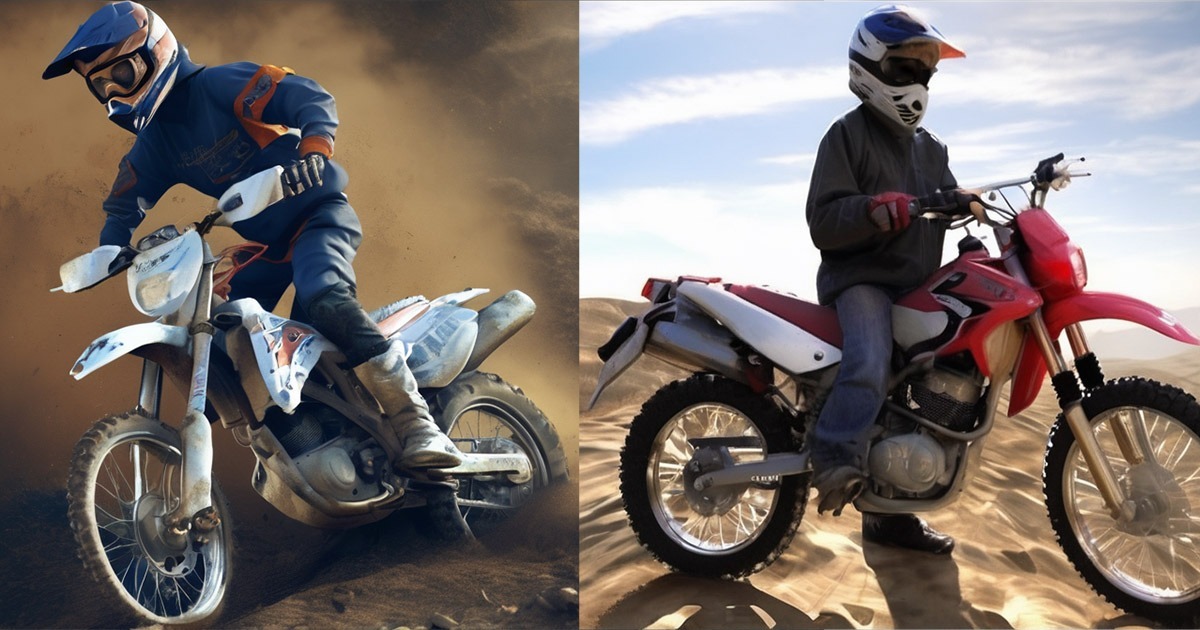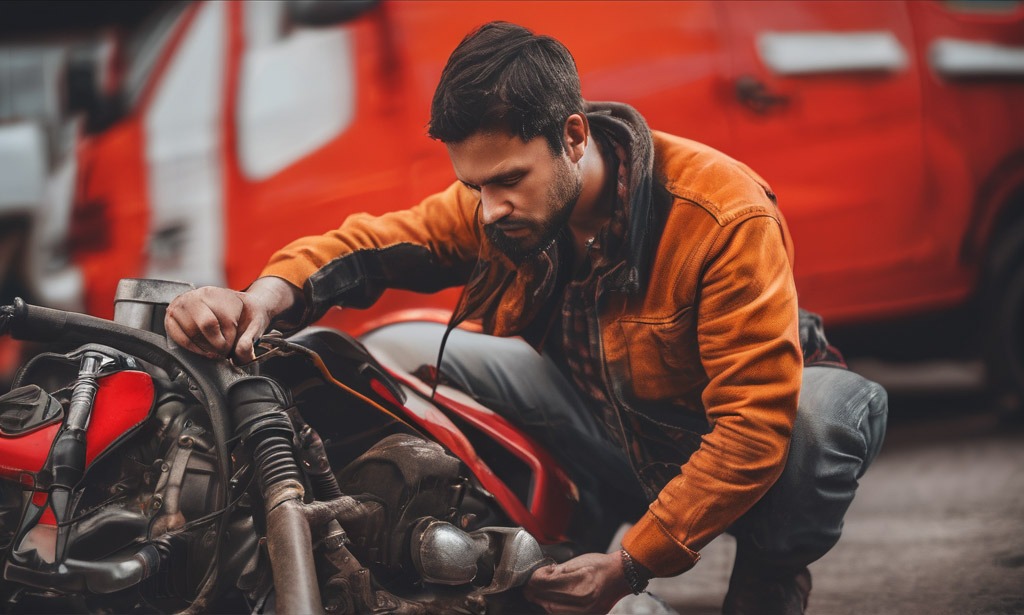Dirt bikes, also called off-road motorcycles or motocross bikes, are designed to tackle rough terrains with skill and power. They typically have knobby tires, long suspension travel, and a rugged frame with hydraulic shocks to handle bumpy terrain such as dirt trails, mud, rocks, and jumps. Dirt biking is a very popular sport, with the dirt biking market expected to grow at a CAGR of 5.65% until 2031.
These bikes are mainly designed for off-road performance rather than outright speed like road racing motorcycles are. Their design prioritizes agility, suspension travel, and durability to handle rough terrain and jumps. Dirt bikes also have a tough construction with exposed engines and little bodywork to prevent unnecessary damage and are much lighter than standard road-going motorcycles. However, this doesn’t mean they are slow- mid-sized dirt bikes can reach 50 to 80 miles per hour (80 to 129 kilometers per hour) depending on the conditions.
Different types of dirt bikes emphasize speed. For example, motocross bikes are optimized for quick acceleration and agility on closed dirt tracks. In contrast, enduro bikes are designed for endurance and versatility across varied terrain.
One common question among enthusiasts is: How fast can a dirt bike go? To answer this question and many others, we’ll delve into factors that impact dirt bike speed, explore the speed ranges of different engine sizes and types of dirt bikes, and provide suggestions for increasing your dirt bike’s speed.
Table of Contents
ToggleFactors Influencing Dirt Bike Speed
Engine Size and Power: The engine size plays a crucial role in determining the speed of a dirt bike. Generally, the greater the engine’s cubic capacity (cc), the more force it generates, resulting in higher speeds.

Two-Stroke vs Four-Stroke: Two-stroke and four-stroke engines have different power delivery and speeds. 2-stroke engines are generally speedier than 4-stroke because they complete a power cycle with every crankshaft revolution, which results in immediate power delivery. 2-stroke engines are also lighter and have a simpler design than 4-stroke engines. However, 4-stroke engines beat 2-stroke in other ways; they are heavier and have more soundness and traction on the track.
Rider’s Build & Weight: Believe it or not, your own weight and build can impact the speed of your dirt bike. Heavier riders may experience slightly slower speeds than lighter riders due to the increased burden on the bike.
Rider’s Skill Level: Your skill level as a rider also plays a critical role in controlling the speed of a dirt bike. If you’re trained, you can push your bike to higher speeds more confidently and safely.
Weight and Frame Design: The overall weight and design of the dirt bike, including its frame and chassis,
impact its speed and maneuverability. Lighter bikes with refined frame designs offer better acceleration and handling at higher speeds.
Suspension and Handling: The quality of the suspension system directly affects a dirt bike’s ability to maintain stability and control at varying speeds, especially over uneven terrain. Well-tuned suspension enhances handling and confidence at high speeds.
Terrain: The type of terrain you’re riding on can significantly impact your speed. Rough, uneven terrain may slow you down, while smooth, flat surfaces allow faster speeds.
Other less important factors include
Tire Type and Condition: The type and state of tires impact traction, which affects acceleration and speed, particularly on loose or muddy terrain.

Maintenance: Regularly maintaining your bike, including engine tuning, chain lubrication, and brake adjustments, guarantees better performance.
Power-to-Weight Ratio: The power-to-weight ratio, which compares the engine’s power output to the weight of the bike and rider, affects acceleration and top speed. Thus, you want your bike to weigh less but have a comparatively powerful engine for better speed.
Aerodynamics: While not as critical as in road racing, aerodynamics still plays a role in dirt bike speed. Some models are designed to reduce wind resistance, improving top speed.
Transmission and Gear Ratios: The gears in your dirt bike make a big difference for dirt bike speed. Gear ratios are the relationships between the sizes of these gears. Different gears provide different power or speed. You can adjust these gears to fit different types of riding situations, like when you’re on a straight track or dealing with tricky terrain.
Speed Ranges of Various Dirt Bikes
Adult dirt bikes are typically in the 230cc to 450cc range, while younger adults or children might ride anything from 50cc to 150cc. The greater the cubic capacity (cc), the faster the bike.
As of 2023, the fastest dirt bike in the world is considered to be the KTM 450 SX-F, with a top speed of 123 miles per hour (mph). It’s a 450cc dirt bike and has 5 Supercross titles under its belt in the last 7 years.
While speed may not be the foremost factor in dirt bikes, understanding some basic averages can be useful.
Here are some average speeds of bikes based on their engine power:
How Fast Does a 75cc Dirt Bike Go?
Entry-level dirt bikes with engine capacities of 75cc typically offer speeds ranging from 25 to 40 mph (40-64 km/h). These bikes are suitable for young riders and beginners, prioritizing safety and ease of control.
How Fast Does a 125cc Dirt Bike Go?
With engine capacities of 125cc, these dirt bikes can reach speeds of 55 to 60 mph (88-96 km/h). They strike a balance between manageable power and sufficient speed, making them popular choices for newbies and intermediate riders.
How Fast Does a 250cc Dirt Bike Go?
Intermediate to advanced riders prefer 250cc dirt bikes, which are capable of speeds ranging from 70 to 80 mph (112-128 km/h). These bikes offer boosted power and performance, making them suitable for motocross racing and tough off-road trails.
How Fast Does a 450cc Dirt Bike Go?
High-performance dirt bikes with engine capacities of 450cc can achieve speeds of up to 90 mph (144 km/h) or more. Designed for experienced riders and professional racers, these bikes deliver unmatched power and speed for dominating the toughest terrains and competitions.
Speed Ranges of Types of Dirt Bikes
Motocross Bikes: Specialized for racing on closed off-road circuits, motocross bikes are designed for speed. They have strong engines and lightweight bodies. They can reach speeds of up to 90 mph (144 km/h), although actual speeds during races may vary depending on track conditions and rider skill.
Trail Bikes: Trail bikes are adaptable machines suitable for recreational riding on a variety of terrains. Their speed ranges typically align with engine sizes, offering moderate speeds for exploring trails and forest paths.
Enduro Bikes: Enduro bikes are built for endurance competitions that combine off-road racing with long-distance riding. While they prioritize durability and comfort, they can still achieve remarkable speeds like motocross bikes.
Dual-Sport Bikes: Dual-sport bikes are street-legal motorcycles designed to handle both on-road and off-road riding. Their speed capabilities vary, but they typically adhere to legal speed limits on roads while offering enough power for off-road adventures. Dual-sport bikes typically have speeds similar to trail and enduro bikes, ranging from 40 mph to 70 mph (64-112 km/h), depending on the engine size and the state of the road.

Tips for Increasing Dirt Bike Speed
Upgrading Engine Performance: When you’re looking to give your dirt bike an extra boost, think about adding some performance-enhancing components like high-flow air filters, aftermarket exhaust systems, and engine tuning kits. These upgrades amp up your bike’s horsepower and top speed.
Clutch Kits: With upgraded clutch kits featuring stronger springs and improved friction materials, you can enhance your bike’s acceleration and overall performance. This means smoother shifts and more suitable power delivery, allowing you to ride with more confidence and control.
Fuel Tuners: By adding fuel injection tuning modules or carburetor jet kits, you can optimize the fuel-air mixture ratios in your engine. This optimization leads to improved engine efficiency and responsiveness, resulting in boosted speed.
Enhancing Suspension: Upgrading suspension components such as shocks, springs, and damping systems is vital for improving stability, traction, and control at high speeds. When you invest in better suspension, you’ll experience a smoother ride over rough terrain.
Tyres: It’s essential to choose the proper tires with aggressive tread patterns and rubber compounds to enhance grip and traction. These enhancements allow you to accelerate faster and cut sharp corners without losing control.
Weight Reduction Strategies: By shedding excess weight from your bike through lightweight aftermarket parts like carbon fiber components or aluminum replacements, you can enhance your bike’s power-to-weight ratio and performance.
Professional Tuning and Maintenance: Routine maintenance and professional tuning by experienced mechanics are essential for optimizing engine performance and addressing any mechanical issues.

Conclusion
While speed isn’t the primary focus in motocross, understanding basic bike sizes and average speeds can be helpful. Your size and height relative to the bike matter more than its top speed. Remember, it’s not the size of the bike but how you handle it. Various factors affect the speed of a dirt bike, including road surface and maintenance. Finally, your budget can play a big part in how fast a dirt bike can go. If you have a larger budget, you could modify your dirt bike by installing performance-oriented components.
Lastly, while speed is exhilarating, prioritizing safety is paramount when riding dirt bikes. Always wear appropriate safety gear, including helmets, goggles, gloves, and protective clothing. Additionally, maintain control of your vehicle, stay aware of your surroundings, and ride within personal limits to prevent accidents and injuries.
References:
https://www.industryresearch.co/
https://www.wired.com/2015/06/motocross-riders-dont-die-time/
